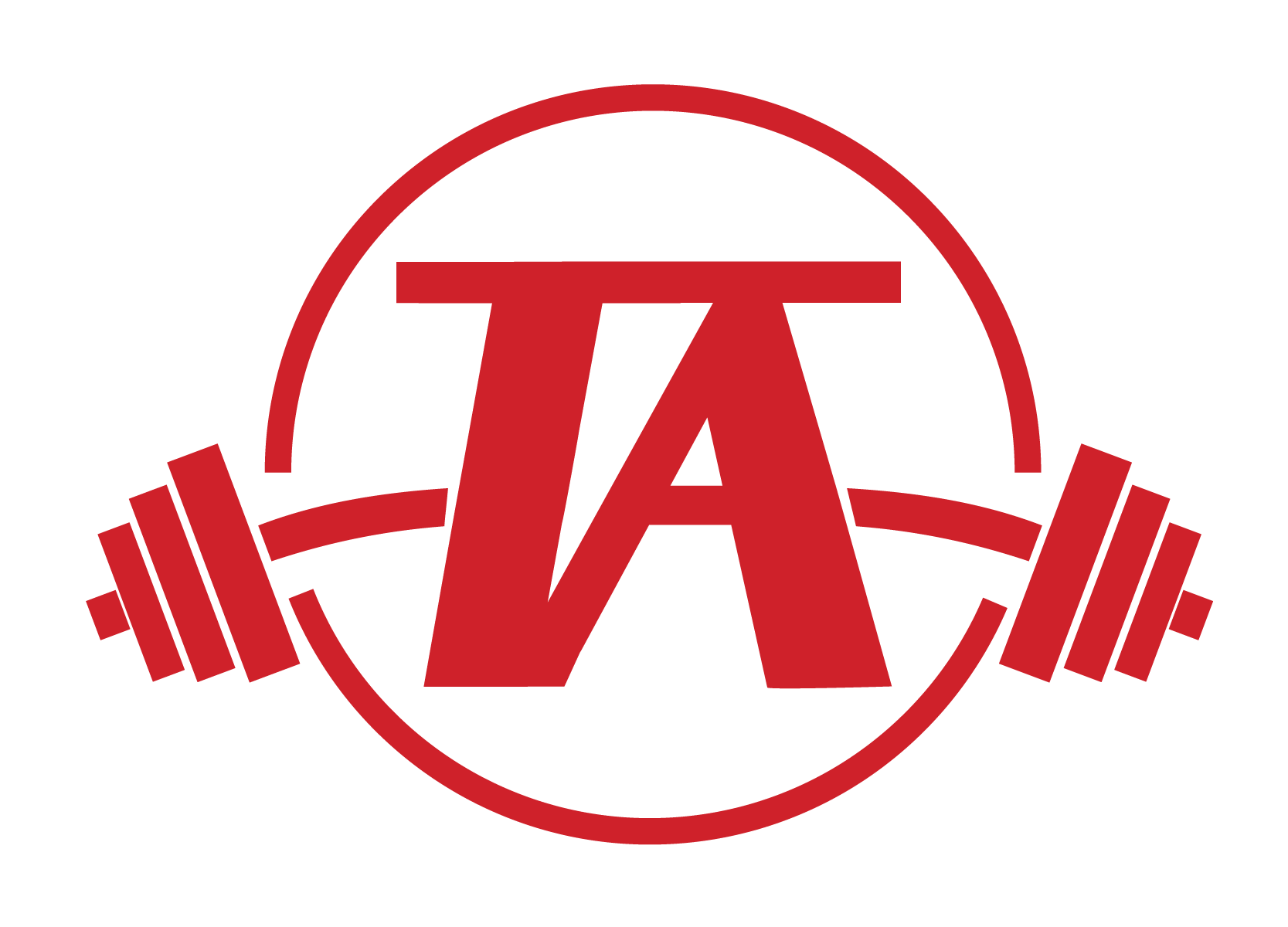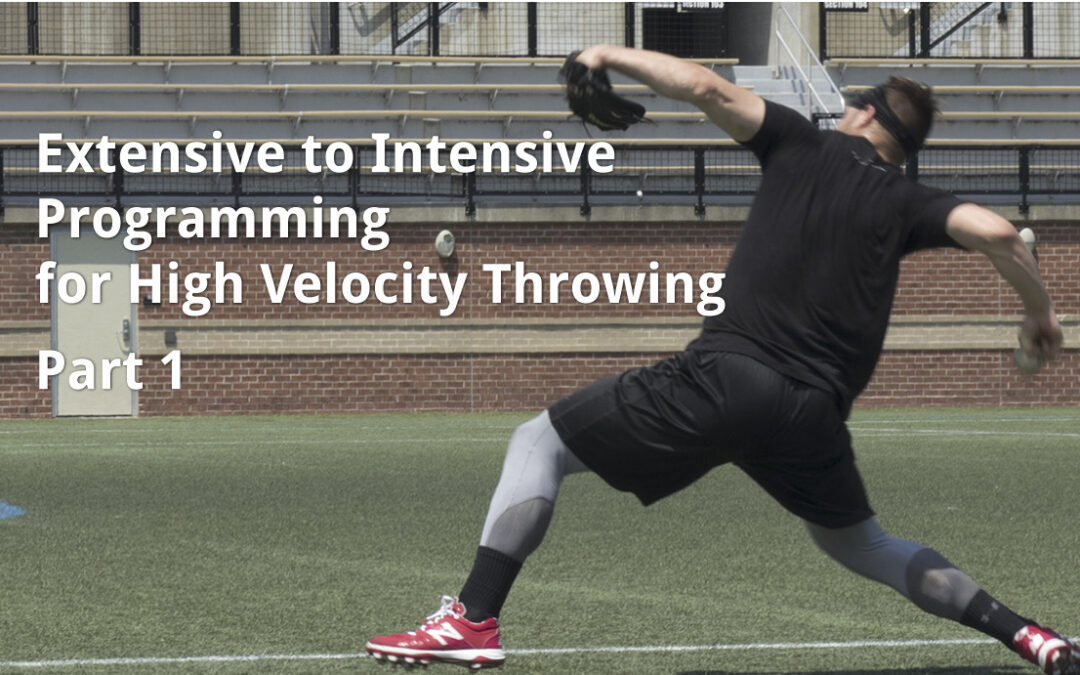Throwing velocity is undeniably important for getting opportunities to play at the highest level and is often one of the important factors in determining the amount of money made by a pitcher. While some may still believe that throwing velocity is innate and cannot be trained, empirical and anecdotal data has consistently shown that to be false. So, with so many programs out there promising huge gains in velocity, how do you know what to trust? In order to make the desired progress and keep athletes as healthy as possible, throwing programs should follow an extensive to intensive model.
Keys to Extensive Programming
Technical Changes and Mechanics
Technique and movement quality are the bases which all long-term adaptations are built on. Jay Demayo got me thinking about this with his opinion on conditioning. I’m going to paraphrase what Jay said. Basically, technique and mechanics should be trained first as they offer significant downstream effects and can enhance conditioning by making an athlete more efficient with their movements so that a given intensity level requires less energy expenditure. This is applicable to throwing for a few reasons. Without efficient mechanics, injury risk increases and capacity is limited. By capacity, I mean the amount of velocity that can be gained. Technical changes should also be made prior to increasing intensity as high intensity can interfere with the movement changes being attempted. This is for a few reasons. First, at higher intensity the athlete will likely revert to their most comfortable pattern in order to attempt to use their body’s most efficient pathway. Second, the use of high intensity necessitates lower volume which means reduced exposure to the constraint drills and other methods necessary to change a movement pattern.
Decreased Specificity
The further away from a competitive event you are, the more general your training can be. This doesn’t mean that you move so far away from pitching that there is no transfer, but this is the time when you may not use your actual pitching delivery at all. If used correctly, this can allow for more efficient movement patterns to emerge when the pitching delivery is cycled back in. Deficiencies can be addressed with significant focus since peak form on the mound is not the goal at the moment. This may mean short term decreases in performance level. But, once more specific training is cycled back in, a performance increase should be seen, provided training was well planned and executed during this phase.
Controlling Load and Injury Risk
Injury risk is a part of all elite sports and while it can’t be eliminated, we can do our best to minimize it with intelligent programming and progressions. Most athletes are far less prepared than they think when they begin a velocity enhancement program. Prior to beginning a higher intensity phase, athletes must make any mechanical changes which have been deemed a high injury risk or red flag, build an appropriate chronic throwing load, and prepare the tissues for extreme velocities. This is where working from extensive to intensive comes into play.
Let’s dive into the basic layout of an extensive throwing program.
Warm-Up
The first step to a safe and effective throwing program is a proper warm-up. I’ve written in depth about this topic previously, and you can find that article here. But, here are the basics:
- Self-myofascial release (SMR) for 10-15 minutes on specific areas of need. SMR may acutely increase ROM while reducing soreness with no decrease in performance (Beardsley et al., 2015). This helps set the stage for the mobility drills we’ll use next to “lock in” this new ROM.
- Specific mobility. This will include a mix of dynamic mobility drills and end-range isometric holds depending on the needs of the athlete.
- Increase body temperature. Higher muscle temperature may lead to an increase in muscle contraction velocity via an increase in nerve conduction velocity (Andrade et al., 2015). Get a sweat going before you pick up a ball.
- CNS/Neurological prep. Throwing at high velocity requires significant neural drive and arousal. Use overcoming isometrics, jumps, sprints, or med ball throws to get ready for your throwing session.
Here’s a sample warm-up:
SMR
- Barbell Pec Smash
- Barbell Trap Release
- Subclavius Release
- Foam Roll Upper Back
Movements
- Diaphragmatic Breathing
- 1-Leg Glute Bridge x8/side
- Side-Lying T’s x10/side
- Quadruped T-Spine Rotation x10/side
- Half-Kneeling Hip Extension x8/side
- Adductor Rockers x8/side
- Supine Horizontal Abduction x8/side
- Ankle Dorsiflexion Mobilizations x10/side
- Toe Touch x10
- OH Stationary Lateral Lunge x5/side
- J-Band routine
CNS/Neuro
- A-Skip 2x15yds
- Carioca 15yds/side
- Lateral Bound x3/side
- Med Ball Shot Put x5/side
*This warm-up should take a total of 25-40 minutes.
The first phase allows athletes to build their throwing load by increasing volume and intensity of throwing each week. Just as with extensive plyometrics, extensive throwing allows athletes to prepare their tissue for the higher intensity movements to come. It also allows practice of the individual movements and getting a feel for the rhythm and relaxation required to perform optimally. This phase will be longer for athletes coming off of a period of no throwing or an injury, but even for athletes who have been throwing but are new to velocity enhancement programming, an extensive phase is strongly recommended.
This phase is by definition more general than the intensive throwing that will come next as it allows athletes to build their throwing load in a general sense, move athletically, and prepare for high intensity throwing. The specific drill work that is used in preparation for the main throwing each day will necessarily vary from athlete to athlete based on deficiencies, level of development, and experience with throwing programs. Along these same lines, ball weights will vary, but in general I tend to lean towards heavier implements earlier in the throwing program as muscle activation is a bit higher, and therefore stress on the passive restraints tends to be reduced. The “feel” that athletes receive from overload implements is greater and the increased ball weight helps lower the absolute intensity.
The key with the extensive phase is to gradually build intensity and volume so that when the athlete undertakes an intensive phase they are prepared to perform at a high level as safely as possible. Some guidelines to build the program by:
- Work backwards from your end goal
- Keep you acute:chronic workload ratio between 0.8 and 1.3
- When possible monitor outputs by radar gun rather than RPE
For example, if you have an athlete who has been throwing, but could benefit from an extensive phase, and they need to be throwing at full effort in 4 weeks you can build backwards from that.
Week 4: 90-95% velocity during 1-2 sessions, increase throwing volume 5-30% (from previous week)
Week 3: 85-90% velocity during 1-2 sessions, increase throwing volume 5-30%
Week 2: 80-85% velocity during 1-2 sessions, increase throwing volume 5-30%
Week 1: 75-80% velocity during 1-2 sessions, increase throwing volume 5-30%
The velocity percentages are based on the maximum velocity of that athlete for the drill that is used. Velo horseshoes can be a great option here as it allows for some fun and competition while still serving its purpose of preparing the athlete for increasing load.
For each of these days it should be stressed to athletes that the goal is to reach these velocity ranges with the lowest possible effort and that they do not need to reach the top end of the range, it is merely there as a guide. Fatigue can vary from day to day and while the peak allowable absolute intensity for a day remains unchanged, the relative intensity may be significantly affected. For example, if the range for a day is 80-85 mph, but an athlete is fatigued, reaching 85 mph may require a far greater RPE than is intended.
Intensive Throwing
When an athlete reaches the intensive throwing phase they should not be overly fatigued (can be measured with readiness tests, as discussed later) and they should be injury-free. If either of these are not the case, then intensive throwing cannot be undertaken. The goal of this phase is different than the previous phase in that now it’s time to use maximal intensity to work toward the desired adaptation- higher velocity. This means that volume will no longer continue to increase, but will remain relatively stable and allow for adequate recovery between high output sessions.
Minimize Volume and Fatigue
As stated earlier, higher intensity necessitates lower volume. This means both during the session and during the micro and mesocycle. Charlie Francis was famous for stating that outputs under 95% were conditioning, not speed work. The same can be said for throwing velocity. If the goal is to increase throwing velocity you have to be fresh, and this means that fatigue from excess volume cannot be allowed to accumulate throughout the week or session. For example, if a sprinter is trying to increase their max velocity they are not going to perform 30 flying 10’s. They’ll use a low volume with plenty of rest and make sure the quality is extremely high.
This is where autoregulation can also play a role. For example, if an athlete’s velocity drops below 95% of their best for the day, they are finished, even if the prescribed number of throws has not been performed. The cutoff percentage can change based on the goals of the training session as well as the frequency and density of high intensity throwing during that microcycle. This can be a complex topic, that is beyond the scope of this article, but one that I will elaborate on in a future article.
The velocities for all high intensity days should be recorded so that athletes have an understanding of how they’re progressing and the program can be objectively evaluated. Some form of readiness testing (hand grip dynamometer, jump tests, etc.) should be used throughout the week so that a baseline is formed and adjustments can be made as needed. If progress is not consistently made (it won’t be linear, but the trend line should still be up), factors such as lifestyle (sleep, nutrition, activity outside of training) should be examined as well as mechanical changes that may still be required.
After this 4 week block a 1-week deload can be used and will allow the athlete to decay some of the built-up fatigue and be prepared for another, more specific, intensive training cycle. Or if fatigue is clearly accumulating sooner (consistently lower velocities or readiness scores), week 4 can become a deload week.
Conclusion
Throwing programs are not all created equal. Principles, rather than means, are what matter. Stick to principles and your health and performance will thank you. Stay tuned for part 2 of this series where I’ll dive into the general side of weight room programming along with this (strength and power).
Interested in woking with me? Contact me and let’s set up a call to discuss your needs and our remote and in-person training options.

